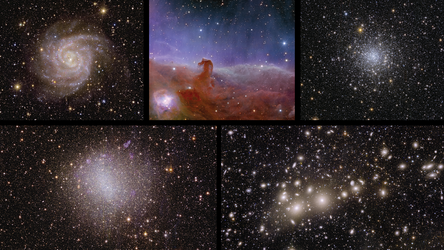Accept all cookies Accept only essential cookies See our Cookie Notice

About ESA
The European Space Agency (ESA) is Europe’s gateway to space. Its mission is to shape the development of Europe’s space capability and ensure that investment in space continues to deliver benefits to the citizens of Europe and the world.
Highlights
ESA - United space in Europe
This is ESA ESA facts Member States & Cooperating States Funding Director General Top management For Member State Delegations European vision European Space Policy ESA & EU Space Councils Responsibility & Sustainability Annual Report Calendar of meetings Corporate newsEstablishments & sites
ESA Headquarters ESA ESTEC ESA ESOC ESA ESRIN ESA EAC ESA ESAC Europe's Spaceport ESA ESEC ESA ECSAT Brussels Office Washington OfficeWorking with ESA
Business with ESA ESA Commercialisation Gateway Law at ESA Careers Cyber resilience at ESA IT at ESA Newsroom Partnerships Merchandising Licence Education Open Space Innovation Platform Integrity and Reporting Administrative Tribunal Health and SafetyMore about ESA
History ESA Historical Archives Exhibitions Publications Art & Culture ESA Merchandise Kids Diversity ESA Brand Centre ESA ChampionsLatest
Space in Member States
Find out more about space activities in our 23 Member States, and understand how ESA works together with their national agencies, institutions and organisations.
Science & Exploration
Exploring our Solar System and unlocking the secrets of the Universe
Go to topicAstronauts
Missions
Juice Euclid Webb Solar Orbiter BepiColombo Gaia ExoMars Cheops Exoplanet missions More missionsActivities
International Space Station Orion service module Gateway Concordia Caves & Pangaea BenefitsLatest
Space Safety
Protecting life and infrastructure on Earth and in orbit
Go to topicAsteroids
Asteroids and Planetary Defence Asteroid danger explained Flyeye telescope: asteroid detection Hera mission: asteroid deflection Near-Earth Object Coordination CentreSpace junk
About space debris Space debris by the numbers Space Environment Report In space refuelling, refurbishing and removingSafety from space
Clean Space ecodesign Zero Debris Technologies Space for Earth Supporting Sustainable DevelopmentLatest
Applications
Using space to benefit citizens and meet future challenges on Earth
Go to topicObserving the Earth
Observing the Earth Future EO Copernicus Meteorology Space for our climate Satellite missionsCommercialisation
ESA Commercialisation Gateway Open Space Innovation Platform Business Incubation ESA Space SolutionsLatest
Enabling & Support
Making space accessible and developing the technologies for the future
Go to topicBuilding missions
Space Engineering and Technology Test centre Laboratories Concurrent Design Facility Preparing for the future Shaping the Future Discovery and Preparation Advanced Concepts TeamSpace transportation
Space Transportation Ariane Vega Space Rider Future space transportation Boost! Europe's Spaceport Launches from Europe's Spaceport from 2012Latest

Euclid’s wide-eyed look at the cosmos
Thank you for liking
You have already liked this page, you can only like it once!
Euclid’s telescope and its optics are designed to deliver a large view of the sky in one shot. This is crucial for a mission whose primary goal is to map, at a high sensitivity, more than one-third of the celestial sphere within six years.
This figure shows an overlay of an image of the Moon on top of an image of the sky recorded simultaneously by the 36 detectors of Euclid’s VIS instrument. The VIS image was obtained in one single shot during the initial months of testing of the spacecraft. It illustrates that the area of the sky that Euclid can observe within one pointing of the telescope, is larger than that of the full Moon. The aperture angle of the Moon’s diameter is approximately 0.5 degrees. Euclid’s gaze captures in one single observation a square area of the sky of about 0.7 times 0.7 degrees.
To achieve this, VIS is equipped with 36 CCDs (Charge Coupled Devices, a type of camera sensor), arranged in a 6x6 grid; each sensor having more than 4000x4000 pixels. The NIPS instrument is fitted with a 4x4 grid of near-infrared sensors of more than 2000x2000 pixels each. While VIS measures the shapes of the galaxies, NISP measures their brightness (and how it changes over wavelengths), requiring a smaller number of detector arrays that have larger pixels.
Euclid is the only telescope that currently can observe such a large area of the sky in one single sitting with such sharpness, in visible and near-infrared light.
-
CREDIT
ESA/ESA/Euclid/Euclid Consortium/NASA, S. Brunier -
LICENCE
CC BY-SA 3.0 IGO or ESA Standard Licence
(content can be used under either licence)

Euclid's first images: the dazzling edge of darkness

Euclid's first images: the dazzling edge of darkness

Euclid looking into the Universe

Space Team Europe for Euclid: Jean-Charles Cuillandre















 Germany
Germany
 Austria
Austria
 Belgium
Belgium
 Denmark
Denmark
 Spain
Spain
 Estonia
Estonia
 Finland
Finland
 France
France
 Greece
Greece
 Hungary
Hungary
 Ireland
Ireland
 Italy
Italy
 Luxembourg
Luxembourg
 Norway
Norway
 The Netherlands
The Netherlands
 Poland
Poland
 Portugal
Portugal
 Czechia
Czechia
 Romania
Romania
 United Kingdom
United Kingdom
 Slovenia
Slovenia
 Sweden
Sweden
 Switzerland
Switzerland

























